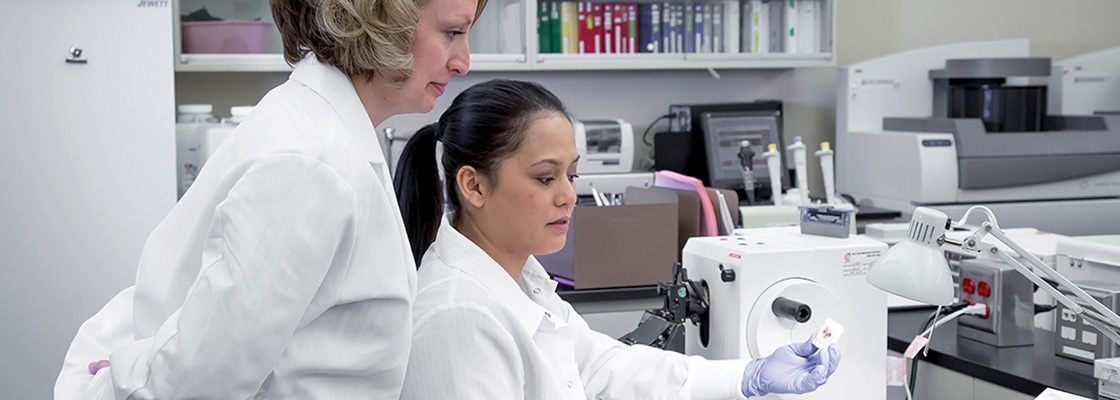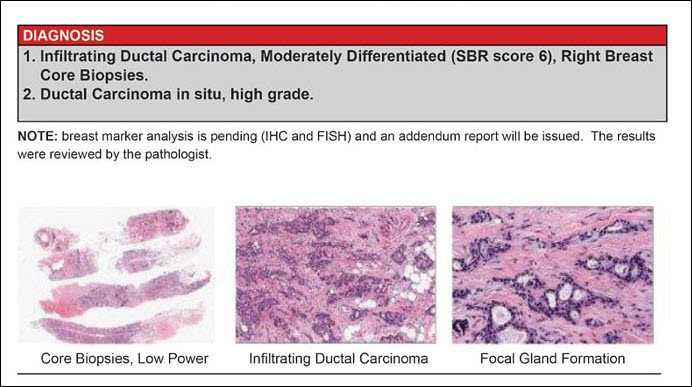Your Diagnosis
Effective treatment begins with the right diagnosis.

After all the imaging, tests, and biopsies, breast cancer patients can be overwhelmed by what seems like a foreign language—terms like HER2-positive, triple negative, or “clear margins”—to name just a few. Pathologist Carey August, MD, FCAP, helps cut through the confusion.
Linda Bennett took her son Dustin to several doctors to find the cause of his sporadic, jerking spasms. After years of medications and hospital stays, a specialist recommended that Dustin undergo whole exome sequencing. Listen to Linda discuss their experience.
Celiac disease can develop at any age after people begin eating foods or taking medicine that include gluten, a protein found in wheat, rye, and barley. See how the use of an algorithm has made testing and diagnosis for celiac disease more streamlined and effective.
Reading Your Pathology Report
A pathology report may not always be the easiest information to comprehend, but don’t worry. In this video, pathologist Carey August, MD, FCAP, explains what a patient should know about the information recorded on their pathology report.
Following a Tissue Sample
Reva McClain’s breast cancer diagnosis began with the examination of her tissue under the microscope, but it didn’t end there. See how a team of medical experts rely on the pathologist’s knowledge of the genetic secrets of the tumor to determine the most effective therapy for patients.
Linda Bennett took her son Dustin to several doctors to find the cause of his sporadic, jerking spasms. After years of medications and hospital stays, a specialist recommended that Dustin undergo whole exome sequencing. Listen to Linda discuss their experience.
